6 Best Fig Trees To Grow In Houston
Growing fruit in Texas can’t possibly get easier than growing figs! For the development of their fruit, common figs of the species Ficus carica do not require pollination. A fig is made up of modified stem tissue, not ovary tissue (as in a peach or an apple). Female and male flowers are found in the stem of common figs. The seeds found inside the fruit are actually just unfertilized ovaries that did not produce fruit. Houston’s best fig varieties include ‘Celeste’, ‘Brown Turkey’, ‘Alma’, ‘Tiger’, ‘Texas Blue Giant’, and ‘Black Italian’.
Homesteaders have grown figs for centuries because they are easy to grow and very adaptable. Their best fruit is produced in Mediterranean climates, where they thrive. This means hot, dry summers and cool, wet winters. About 15 to 20o F is the limit for cold-hardy trees.
To produce fruit, fig trees need full exposure to the sun. Ideally, full sun means a minimum of six direct hours of sunlight, but more is better. Select a site that gets most of the sun throughout the day. Planted on a southern exposure, figs will be better protected from cold winds.
Figs have a shallow, spreading root system that grows quickly. You can expect them to grow quickly to 15-30 feet tall, depending on their variety. Figs tolerate a wide variety of soil types, but proper drainage is important. Make sure they aren’t planted in low spots where excess moisture will accumulate. It is not necessary to fertilize figs at planting, but you should use root stimulators. Plant figs slightly deeper than they grew in their nursery pot and do not fertilize at planting. During the summer months, the plants will require supplemental watering.
Pruning figs should only be done if the branches are broken or dying. It is possible to thin growth in older trees to encourage more fruit production and new lateral branching. Figs need to experience dormancy in the winter, so reduce any supplemental watering in the fall to encourage them to go dormant. Freeze damage is more likely to occur on plants that still have lots of leaves.
It is true that figs prefer organic soil. Spring is the time for organic gardeners to plow in compost and soft-bottom organic fertilizers such as cottonseed, soybeans, and alfalfa meal.
Brown Turkey Fig Tree
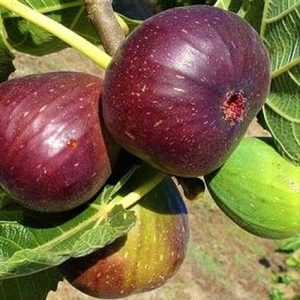
What recipes do you use figs in? Do you like figs fresh or dried? Rather than paying high grocery prices, try growing your own trees!
(Ficus carica ‘Brown Turkey’) produces two crops a year. Sweet, rusted-red fruit with a blush pink flesh.
It’s best to look for the first breba crop in spring and early summer. Early in the autumn, you’ll be rewarded with the main harvest.
A Brown Turkey Fig grows in warm zones with a cooperative climate. Alternatively, if you live in a colder region or if you have a limited space, you can plant your tree in a large container.
Plant the Brown Turkey wherever you have a patio, deck, or balcony. This fruit also withstands urban conditions well, so you can eat it even in a city.
Osborne Prolific Fig Tree
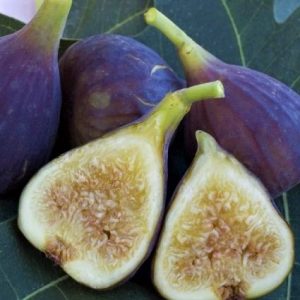
There are figs everywhere! This is why our Osborne Prolific Fig Tree (Ficus carica ‘Osborne Prolific’) makes such a great plant choice! A bumper crop of sweet, plump, and delicious figs means two bumper crops every year for the grower!
Cold-hardy and prolific, it produces fruit each spring and in the fall on its new growth.
Spring will bring the colorful, plum-skinned fruit of your Fig tree to the surface. These large figs are incredibly sweet and delicious! The amber-colored, pink blushed flesh of the Osborne Prolific Fig is just gorgeous!
Spring brings a huge harvest of delicious gems just in time for summer picnics and barbecues! As soon as your spring crop is gone, you will be eagerly anticipating your fall harvest, just in time for holiday baking and jam making!
There is nothing like the fruit of the Fig tree. As opposed to most fruits that contain mature ovarian tissue, figs contain stem tissue as their edible part! Both female and male flower parts of the fig fruit are enclosed in stem tissue.
Chicago Hardy Fig Tree
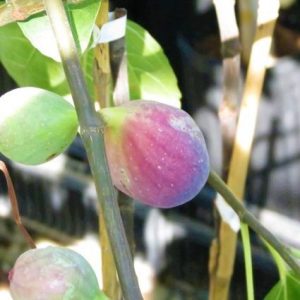
It’s impossible to go back once you take the leap into epicurean edible gardening! Growing your own crops on your patio, balcony or in an orchard row is a very rewarding experience.
This cold-hardy Fig tree will provide you with a bounty of delicious figs starting as early as late summer. There are also some absolutely stunning hardy fig trees (Ficus carica ‘Chicago Hardy’) in Chicago!
An attractive upright shrub or small tree, the Chicago Hardy Fig also features leathery dark green three-fingered leaves. Leaf sizes range from five to ten inches.
This will give the gardens of Northern Europe a wonderful Mediterranean flair. It looks so exquisite on your balcony or patio if you have a pair or trio of containerized lights.
Because it’s robust and rugged, it’s nicknamed Bensonhurst Purple Fig. It’s abundant harvest is unbelievably rewarding for anyone who lives farther south…even after a difficult winter.
You might not notice the green flowers, but you’ll be thrilled to find figs growing in abundance.
Black Mission Fig Tree
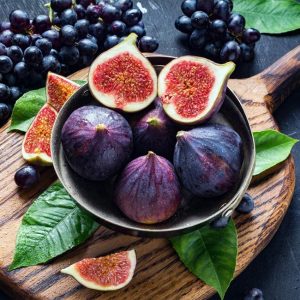
The unique sweetness and incredible texture of the Black Mission Fig make it highly desirable and difficult to find in supermarkets. The good news is that you can now grow your own…saving money and providing the best taste you’ve ever had!
Growth is easy for the Black Mission. The Black Mission Fig, unlike other fruit trees, produces fruit without much pruning, fertilizing, or waiting. Your tree will ripen delicious, sweet figs without even trying. The tree can easily be brought inside during the winter if you plant it in a pot.
Furthermore, you can harvest twice a year. Early spring and early fall will be the times when your tree produces delicious, robust fruit. This richness and sweetness makes it a perfect fruit for baking, as you’ll have plenty to use each year.
Little Miss Figgy Tree
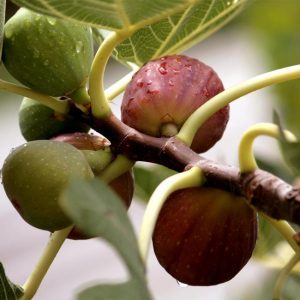
The Little Miss Figgy is ideal for those who want to grow figs in their own backyard but do not have a lot of space.
The small stature of this tree makes it ideal for compact spaces, but it produces huge figs.
You will have fruit the year after ordering larger sizes. It also works great indoors, in front of a sunny window, if you live in a colder climate.
Soon, you’ll be eating this fig famous for its delicious flavor and picking your own figs. With very little effort, this tree provides pure sweetness, consistently and abundantly.
Celeste Fig Tree
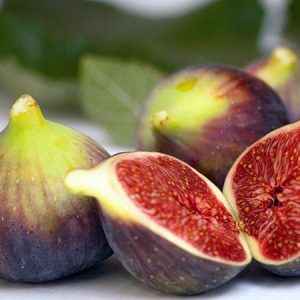
The astronomical significance of fig trees. Looking for a medium-sized, fruit-bearing tree that can handle the elements? Celestial Fig Tree fulfills the requirements. This fast-growing tree provides high productivity, cold hardiness and insect and disease resistance, making it suitable for a wide range of planting locations. Soon, a dense mass of greenery will cover your tree.
Large leaves are a feature of the Celestial, stretching upwards to a foot in length. A great number of medium-sized figs are available, thanks in part to their ‘closed eye’ feature. In the same way that a built-in defense system protects against damage, this feature protects dried fruit from being spoiled. How did it turn out? Figs hanging from your tree in abundance with each harvest.
The Celestial Fig Tree’s stunning color will be the first thing you notice when you begin to see the figs emerge from the ground. Leaving behind a magnificent purplish bronze sheen, the skin is smooth, shiny, and smooth. The flesh glistens pink-amber when cut open. Fruits like this are as delicious as they look.
That might be why celestials are called ‘sugar figs’ by enthusiasts. Figs are popular both fresh off the tree and for preserving because of their rich flavors and crunchy seeds.

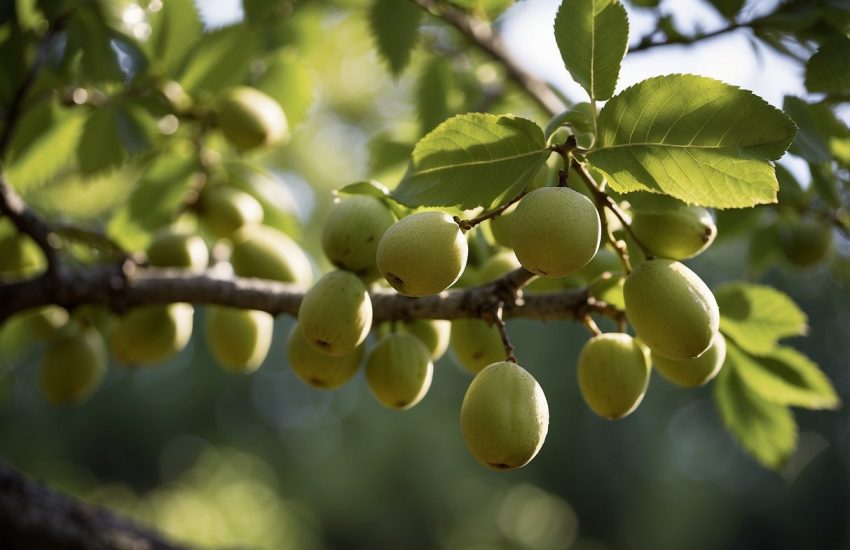

Thanks for all this great information on fig’s I am just getting started.
I’m trying to put in a fig tree where my 100+ Magnolia was destroyed by the hurricane, it’s on the North side but gets lots of sun. Any suggestions for the Houston climate and where to purchase?
Sorry to hear about your Magnolia! For Houston’s climate, varieties like ‘Celeste’ or ‘Texas Everbearing’ should do well. Local nurseries or online vendors like FastGrowingTrees.com may have them in stock. -Plant Native Team